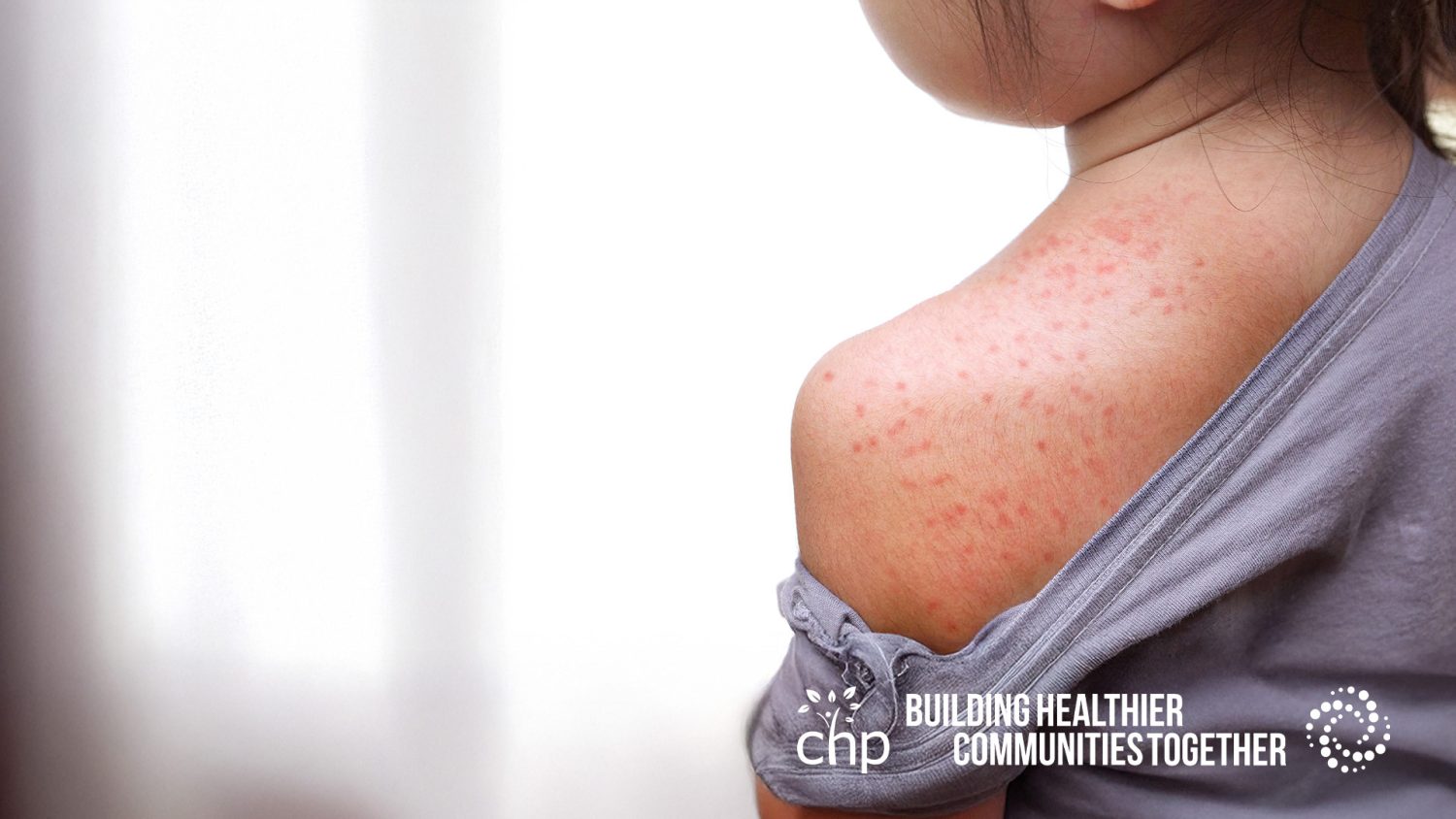
What You Need to Know About the Measles Outbreak in the Gallatin Valley
Post Date: Jul 18, 2025
Medical
The Gallatin Valley is currently experiencing a measles outbreak, with 17 confirmed cases reported as of July 3, 2025, according to the Gallatin City-County Health Department. This highly contagious respiratory disease has affected both children and adults across the community, making it crucial for residents to understand the risks, recognize symptoms, and take protective action.
If you're experiencing fever with rash, cough, or red watery eyes, or believe you may have been exposed to measles, contact your nearest CHP clinic immediately before visiting to receive proper care and prevent exposure to others.
What’s the Current Measles Outbreak Situation in Montana?
The measles outbreak in Gallatin County has been developing since April 2025, with cases linked to various sources, including international travel, household exposures, and community transmission. Of the 17 confirmed cases, 10 (59%) are children 17 and younger, while 7 (41%) are adults 18 and older.
The outbreak has resulted in hospitalizations, with 2 total hospitalizations reported, though not all were attributed specifically to Gallatin County cases. Recent exposure locations have included local businesses, with the most recent public exposure occurring at Studio Coffee Roasters in Bozeman on June 19, 2025.
Other areas of Montana have also seen some measles cases. The Montana Department of Health and Human Services has reported 2 cases in Flathead, 4 in Hill, and 2 in Yellowstone. No measles-related deaths have been reported at this time.
What Are Common Measles Symptoms?
Recognizing measles symptoms is critical for early identification and prevention of a measles outbreak. Symptoms typically appear 7-14 days after infection, but they can sometimes take up to 21 days to appear.
Initial measles symptoms (7-14 days after exposure):
High fever (may spike above 104°F)
Persistent cough
Runny nose
Red, watery eyes (conjunctivitis)
2-3 days later: Small white spots (Koplik spots) may appear inside the mouth
3-5 days after initial symptoms: The characteristic measles rash appears, starting on the face at the hairline and spreading downward to the neck, trunk, arms, legs, and feet. The rash appears in flat red spots, occasionally with small raised bumps. The rash usually lasts 5-6 days.
Is a Measles Outbreak Serious?
Measles is far from a harmless childhood illness. Measles can cause serious health complications, such as pneumonia (infection of the lungs), encephalitis (swelling of the brain), and even death. These measles statistics from the Centers for Disease Control and Prevention (CDC) are sobering:
About 1 in 5 unvaccinated people who get measles require hospitalization.
As many as 1 out of every 20 children with measles develops pneumonia.
About 1 child out of every 1,000 who gets measles will develop brain swelling (encephalitis).
Nearly 1 to 3 of every 1,000 infected children may die from complications.
Certain groups face higher risks from a measles outbreak, including children younger than 5, adults older than 20, pregnant women, and people with weakened immune systems.
How Does Measles Spread?
The measles virus lives in the nose and throat mucus, and it spreads through the air when an infected person coughs or sneezes. Its contagiousness is powerful – if one person has measles, 9 out of 10 unprotected people around them will become infected.
What makes measles particularly dangerous is that you can get it just by being in a room where a person with measles has been, even up to two hours after that person has left. Additionally, infected individuals can spread the virus to others for 4 days before they develop the rash through 4 days after the rash appears.
What’s the Best Protection Against a Measles Outbreak?
The best protection against measles is vaccination. The Measles, Mumps, and Rubella (MMR) vaccine is highly effective and provides long-lasting protection against the virus.
Due to the current outbreak, the Gallatin City-County Health Department issued an accelerated administration schedule consideration for the MMR vaccine for all residents and visitors on June 11, 2025.
Standard measles vaccination schedule:
First dose: 12-15 months of age
Second dose: 4-6 years of age
Accelerated schedule during a measles outbreak:
Children who have received their first dose can receive their second dose 28 days after the first.
Adults who have received only one dose should consider an additional MMR dose.
Infants 6-11 months old should receive one dose before traveling.
What to Do If You've Been Exposed to Measles
If you believe you may have been exposed to measles, take immediate action:
- Contact your healthcare provider or CHP clinic first – PLEASE CALL US before coming to the clinic! It’s extremely important to limit the spread of the virus.
Belgrade Clinic: 406.388.3461
Bozeman Clinic: 406.585.4650
Livingston Clinic: 406.222.5799
Consider staying home until you know more about your risk.
If you're not already protected, get vaccinated. The MMR vaccine can provide protection if given within 72 hours of exposure.
Monitor for symptoms for up to 21 days after exposure.
Take Action Today Against the Measles Outbreak
At CHP Health, we're committed to protecting our Montana community during this measles outbreak. Our clinics in Belgrade, Bozeman, and Livingston are prepared to provide:
Pre-visit symptom screening and guidance
MMR vaccinations following current recommendations
Expert medical evaluation for suspected cases
Coordination with local health departments for proper reporting and contact tracing
If you have measles symptoms or exposure concerns, please call your nearest CHP clinic before visiting.
For the most current information about the measles outbreak, visit the Montana Department of Health and Human Services website, our CHP website, or contact your local CHP clinic for personalized guidance and care.